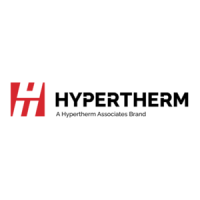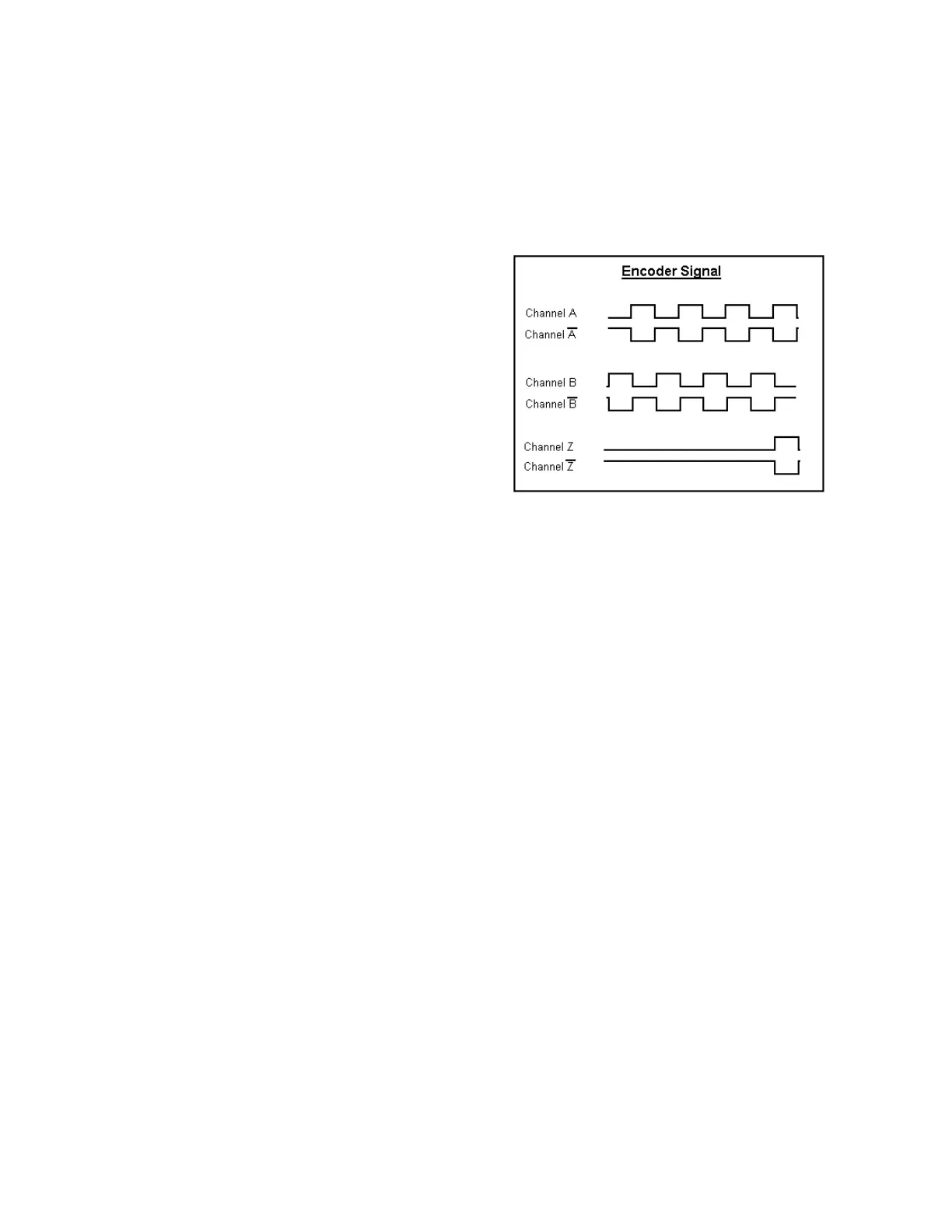Motion Overview 407
As there is a direct relationship between the rotation of the motor shaft, the Encoder
Pulses and the distance of motion traveled (when the motor shaft turns) the control
is able to calculate distance by counting the encoder pulses received, thus closing
the Position loop. So this relationship, shown as a simplified formula would be:
Encoder Pulses x Motor Revs = Distance
The Encoder generates a Square Wave
type signal as illustrated at the diagram to
the right. Generally, most encoders
provide two main signals (A & B) and the
complements (A/ & B/). These signals are
also referred to as channels. The
Compliment channels are not always used
but can provide increased noise immunity
when used. The rotational direction
(Encoder Polarity) can be determined by
the signal received (e.g. ABABA or
BABAB).
The Z signal shown here is produced only once per revolution and is often referred
to as the Marker Pulse. This marker pulse is quite often used for accuracy in
“Homing” routines.
The pulses generated are generally referred to as counts. The holes in the disk are also commonly
referred to as lines. You may hear someone mention that they have a 1000 line encoder. The pulses
picked up by the receiver may actual be the beginning and end of each light pulse per line for each
the two channels (A&B) resulting in a 4x mode encoder. Thus a 1000 line Encoder in 4x mode would
produce 4000 pulses or counts per revolution of the disk/ motor. The more pulses/ counts produced
by the Encoder for a given distance, the more accurate the motion will be.
1b) What is Following Error?
Following Error or Servo Error is the distance between the ideal commanded
position from the control and the actual position of motion. Some Following Error is
to be expected as the response of the motor can rarely ever reach the ideal
command of the system due to the resistance of load being moved. It is easiest to
think of this latent response as being very much like driving a car away from a stop
light. For the car, it takes time for the engine to produce the force required to move
the weight of the car up to the desired speed. Following Error for each axis can be
selected to be viewed in the Watch Window / Status Window of the control. This is a
quick reference tool for monitoring the performance of the actual machine motion as
compared to the control command.
The important consideration for X/Y coordinate motion is that the response for the X
and Y motion is similar. If the response is dissimilar, poor results for commanded
motion will result. An example of a dissimilar tuned response would be that when a

